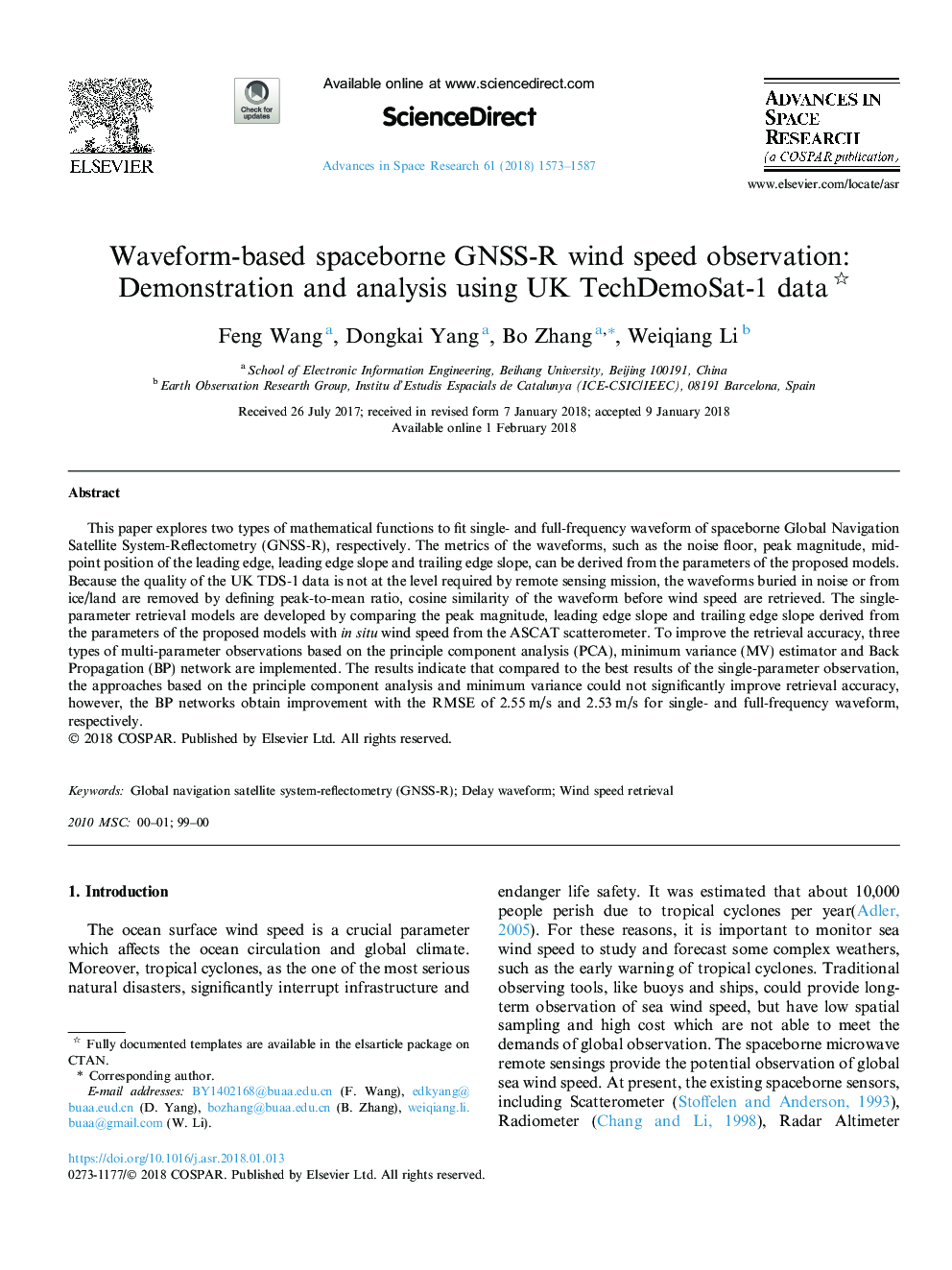| Article ID | Journal | Published Year | Pages | File Type |
|---|---|---|---|---|
| 8132185 | Advances in Space Research | 2018 | 15 Pages |
Abstract
This paper explores two types of mathematical functions to fit single- and full-frequency waveform of spaceborne Global Navigation Satellite System-Reflectometry (GNSS-R), respectively. The metrics of the waveforms, such as the noise floor, peak magnitude, mid-point position of the leading edge, leading edge slope and trailing edge slope, can be derived from the parameters of the proposed models. Because the quality of the UK TDS-1 data is not at the level required by remote sensing mission, the waveforms buried in noise or from ice/land are removed by defining peak-to-mean ratio, cosine similarity of the waveform before wind speed are retrieved. The single-parameter retrieval models are developed by comparing the peak magnitude, leading edge slope and trailing edge slope derived from the parameters of the proposed models with in situ wind speed from the ASCAT scatterometer. To improve the retrieval accuracy, three types of multi-parameter observations based on the principle component analysis (PCA), minimum variance (MV) estimator and Back Propagation (BP) network are implemented. The results indicate that compared to the best results of the single-parameter observation, the approaches based on the principle component analysis and minimum variance could not significantly improve retrieval accuracy, however, the BP networks obtain improvement with the RMSE of 2.55â¯m/s and 2.53â¯m/s for single- and full-frequency waveform, respectively.
Related Topics
Physical Sciences and Engineering
Earth and Planetary Sciences
Space and Planetary Science
Authors
Feng Wang, Dongkai Yang, Bo Zhang, Weiqiang Li,
